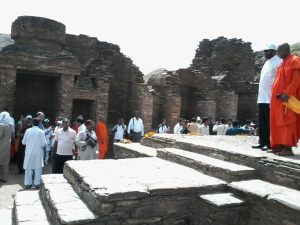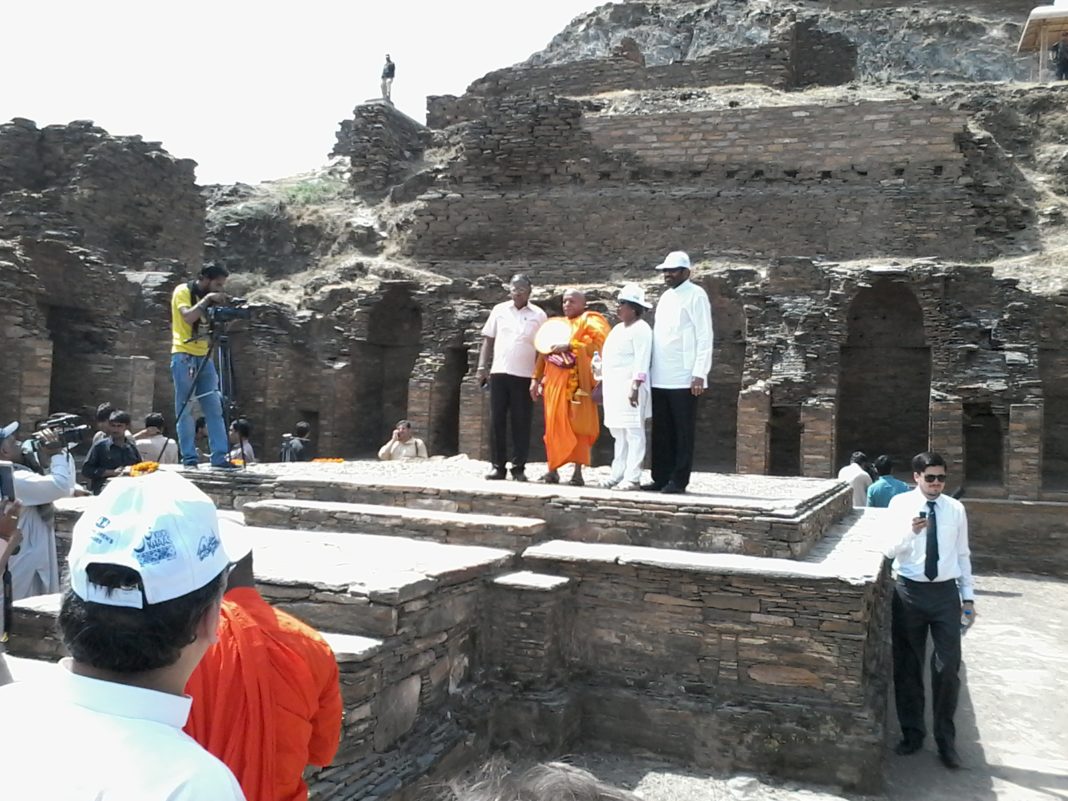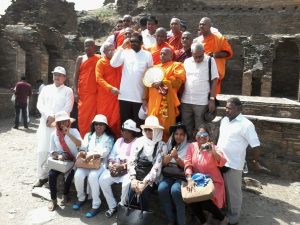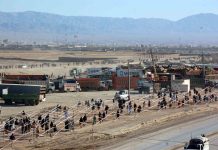Takhtbai, Mardan: The historical Buddhist remains at Takhtbhai echoed with prayers and hymns once again as a delegation of Sri Lankan monks visited the site on May 31, 2016. The ruins of a monastic complex at Takhtbhai or the Throne of Origins are a sacred Buddhist site dating back to the Gandhara civilization that existed in what is now northern Pakistan and Afghanistan from the mid 1st millennium BCE to the beginning of the 2nd millennium CE.

Closed to Buddhist pilgrims and international tourists for over a decade due to conflict and terrorism, the site has been recently reopened to visitors. Last year, a delegation of Korean monks visited the site.
For the 40 members delegation comprising Sri Lankan officials, religious scholars, media representatives and pilgrims including 16 senior monks, it was the first ever visit to Takhtbhai to offer prayers and perform religious rituals.
“The archaeological sites [in Pakistan] are considered sacred for Buddhists all over the world,” Wajira Thero, a Buddhist monk in the delegation, told News Lens.
“The preservation of centuries-old Buddhist site reflects the tolerance and respect of the Muslim-majority Pakistan has for other religions.”
The monks and foreign dignitaries performed prayers and sang hymns at the main stupa and visited various parts of the Bhuddhist remains.

Takht Bhai was listed as a UNESCO World Heritage Site in 1980. It is one of the oldest settlements documented in the history of the subcontinent. The heritage site was excavated in 1836 for the first time and since then archaeologists have excavated hundreds of relics made of clay, stucco and terracotta.

According to UNESCO, the Buddhist ruins of Takhtbhai have high authenticity of setting as it continues to occupy its original location at the hilltop.
“Authenticity of form and design has been preserved and the layout of the monastic complex and buildings are visible. Authenticity and materials as well as traditions and techniques of construction is retained in the stone construction in Gandhara patterns.”
The Pakistan’s government had invited the Sri Lankan delegation on account of the Vesak festival that was celebrated for the first time in the country, said Mashood Ahmad Mirza, Joint Secretary National Heritage.
Vesak is a religious festival in the Buddhist religious calendar which is usually celebrated in May or early June. It marks the birth, enlightenment and death of Lord Siddhartha Gautama Buddha in the Theravada or southern tradition. Vesak was recognised by the United Nations in 1999 as the day of enlightenment to acknowledge the contribution of Buddhism to humanity.
After performing prayers in Takhtbhai, the monks went to Hund museum in Swabi – the last capital of Gandhara civilisation.
“The site in Takhtbhai is well-preserved and is one of the largest ancient monasteries in the world,” said Wajira Thero. “It was our privilege to visit these sites as we have always dreamt of being here.”
Nilmini Fernanda, a member of the delegation, said it was because of the “efforts of governments of both countries” that they were able to visit the site.
“I feel at home in Pakistan,” said Fenanda. “The people here are very friendly.”
Mashood Ahmad said that the authorities have tentatively opened up the site, inviting a small number of foreigners. He said the visit marked the beginning of pilgrimage to the site that visitors from different countries would be able to make in future.
“We want to show the world our cultural diversity, heritage and beauty,” said Mashood.



